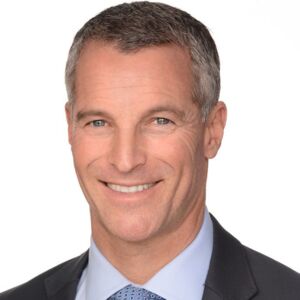From unloved investment to $100 billion juggernaut: 20 years of ETFs in Australia
By Penny Pryor

This year, Australia marks two decades since the first exchange-traded funds were listed on the Australian Stock Exchange. On 27 August 2001, State Street launched the SPDR® S&P®/ASX 200 Fund (STW) and the SPDR® S&P®/ASX 50 Fund (SFY), after flagging its intentions the previous year.
As a junior journalist, I remember reporting on the decision by Standard & Poor 's (which had only recently launched their indices for the Australian market) to license fund managers to run ETFs over those indices in 2000.
At the time, State Street Global Investors and Barclays Global Investors were vying for those rights. And there was a lot of competition for the broader market index of the S&P/ASX 200. State Street obviously won that tussle and announced it would be launching its first ETF in 2001. It was pipped at the post by Solomon Smith Barney in early 2001, which ended up launching the (now defunct) Salomon Smith Barney IndexShares 100 over the S&P/ASX 100 .
Slow start
I have watched over the past two decades as the market has grown to hundreds of funds and over $116 billion in assets under management. I have always been an advocate and whenever I have held stocks have always held ETFs.
However, it wasn't an easy trajectory for ETFs in Australia, with slow inflows for many years, even while the US and global markets boomed.
"The structure of the industry back then and the number of the investments we had available was really [very different]," head of SPDR ETF Asia Pacific Distribution Meaghan Victor says.
It was also before the proliferation of online-brokers and even some financial planning outfits did not offer access to direct shares, as they were not licensed to trade them. It was also an era where financial planners could be paid high commissions to recommend products, which might make them reluctant to recommend a commission-free investment such as ETFs.
"Commissions were charged, platforms were very new as well," Victor said. "The ETF has also been on that journey with evolution of the market."
Although there are now over 200 ETFs available on the ASX, as well as a number of others on Chi-X, back in October 2004, there were just seven, and that was a reduction on the 10 available in October 2003. Market cap in October 2004 had also fallen nearly 10 per cent to $712.4 million in those seven products.
Change of use
As the financial landscape has changed in that time, so too has the way ETFs are used. In a recent survey State Street commissioned to commemorate the 20-year anniversary of the STW, it was found that a much younger cohort of investors now uses ETFs.
Of the new ETF investors in 2021, millennial (aged between 25 and 39) made up the largest percentage at 47 per cent, compared to 23 per cent for Gen X (aged between 40 and 54) and baby boomers (aged 55 plus) at 25 per cent. Compare that to two decades ago and baby boomers made up the majority of new ETF investors at 45 per cent, while millennial and baby boomers each represented 24 per cent of new investors.
"The Australian ETP market is now five times larger than it was just five years ago, with more than $116 billion in assets under management (AUM) and more than 200 ETPs for investors to choose from...Our compound annual growth rate in the market in Australia exceeds the growth in any of the other markets around the world," Victor said.
"Even if the compound annual growth rate slows to a more comparable rate of 25 per cent, like we have seen in Europe and the US, Australian ETP assets are still expected to grow from more than $110 billion to $226 billion in the next three years.
In terms of the kinds of products to come to market, Victor expects environmental, social and governance (ESG) to continue to be a growth area, along with more innovation around particular underlying thematics.
"I think we will definitely see more innovation. It's still got to be done in the context for clients to understand - the principals of low cost, transparency etc - as they are the key features of the ETF."



